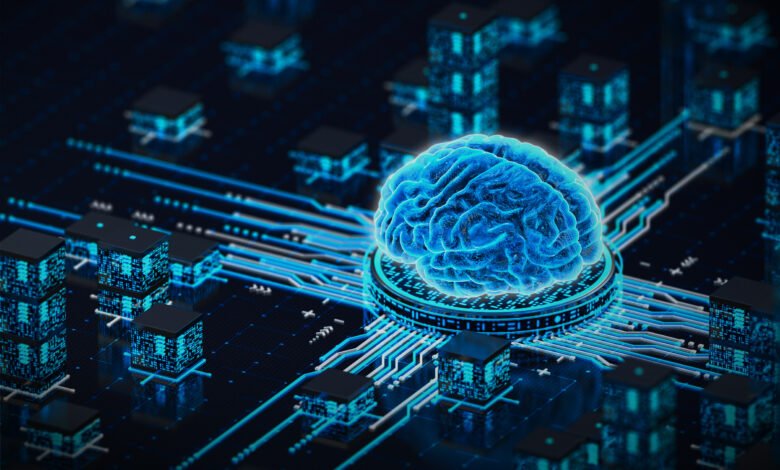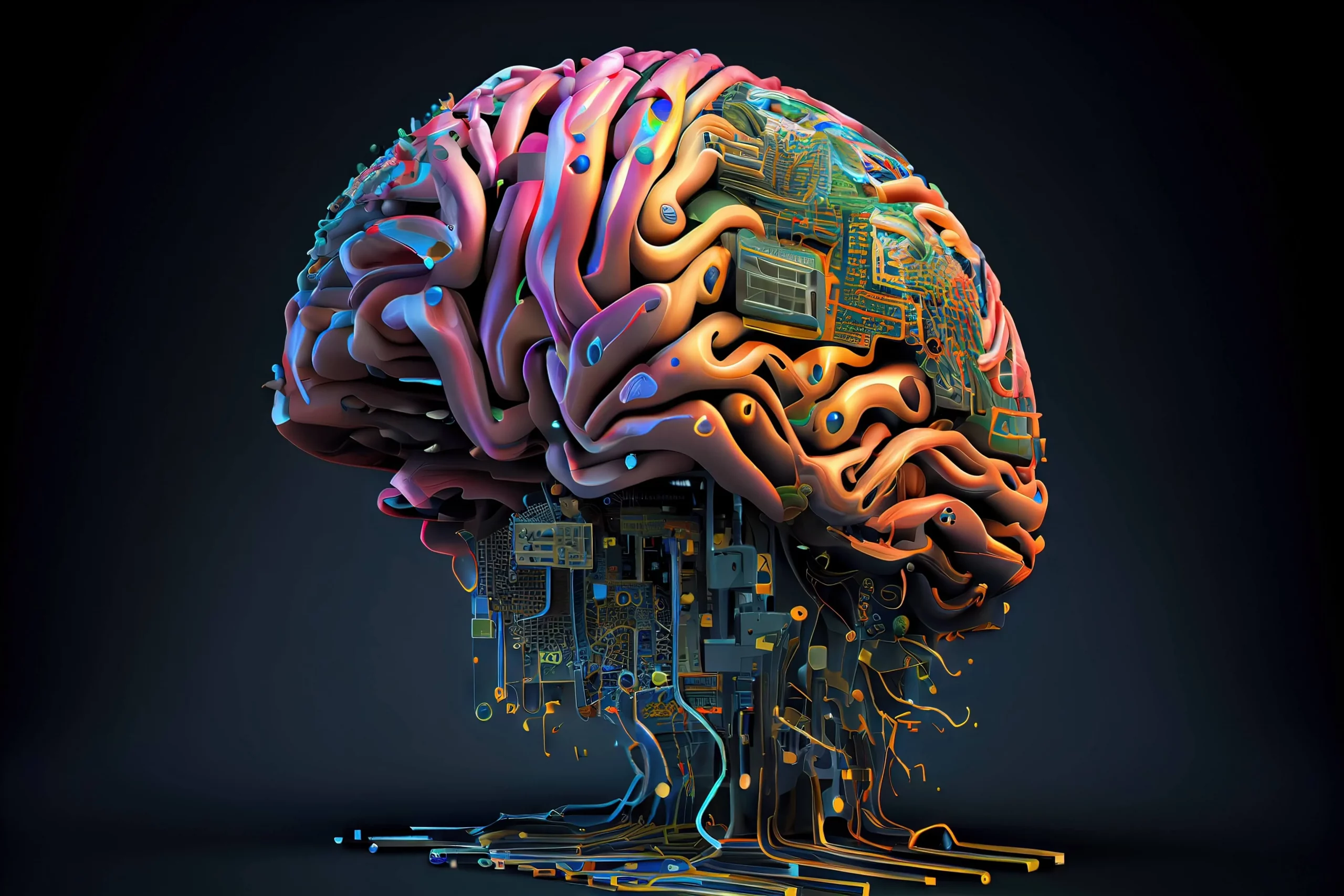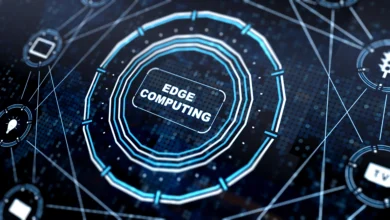Neuromorphic Computing The Next Frontier in AI Technology
Discover how neuromorphic computing is revolutionizing AI technology with brain-inspired architectures, energy-efficient processing, and next

The landscape of artificial intelligence is experiencing a revolutionary transformation, with neuromorphic computing emerging as the most promising technological advancement since the advent of traditional digital processors. This groundbreaking approach to computation represents a fundamental paradigm shift from conventional Von Neumann architectures to brain-inspired computing systems that mimic the neural structures and processes of biological brains.
Neuromorphic computing technology addresses the most pressing challenges facing modern AI systems: excessive energy consumption, limited processing efficiency, and the inability to adapt dynamically to new information patterns. While traditional computers process information sequentially through separate memory and processing units, neuromorphic systems integrate these functions into unified networks of artificial neurons and synapses, creating unprecedented opportunities for energy-efficient AI applications.
The global neuromorphic computing market is experiencing explosive growth, driven by increasing demand for intelligent edge devices, autonomous systems, and real-time data processing capabilities. Major technology leaders, including Intel, IBM, and Samsung, are investing billions of dollars in developing next-generation neuromorphic chips and spiking neural networks that promise to revolutionize everything from robotics to healthcare diagnostics.
What makes neuromorphic engineering particularly compelling is its ability to perform complex cognitive tasks while consuming significantly less power than traditional AI systems. This breakthrough technology enables applications previously considered impossible due to energy constraints, opening new frontiers in mobile AI, Internet of Things devices, and autonomous vehicles. As we stand on the brink of this technological revolution, the principles, applications, and implications of neuromorphic computing become essential for anyone involved in AI development, hardware engineering, or strategic technology planning.
The Fundamentals of Neuromorphic Computing
What is Neuromorphic Computing
Neuromorphic computing represents a revolutionary approach to information processing that fundamentally mimics the structure and function of biological neural networks. This technology involves designing hardware and software that simulate the neural and synaptic structures and functions of the brain to process information, creating computing systems that operate more like human brains than traditional digital computers.
The core principle of neuromorphic engineering lies in its departure from the classical Von Neumann architecture that separates memory and processing functions. Instead, brain-inspired computing systems integrate these capabilities into interconnected networks of artificial neurons that can process, store, and transmit information simultaneously. This architectural innovation enables neuromorphic systems to perform complex computations with remarkable energy efficiency while maintaining the flexibility to adapt and learn from new data patterns.
Key Architectural Components
Neuromorphic chips incorporate several essential components that distinguish them from conventional processors:
Artificial Neurons: These fundamental processing units simulate the behavior of biological neurons, receiving input signals, processing them according to specific algorithms, and generating output responses. Unlike traditional logic gates that operate in binary states, artificial neurons can process analog signals and exhibit threshold-based activation patterns similar to their biological counterparts.
Synaptic Connections: The interconnections between artificial neurons replicate the function of biological synapses, enabling weighted signal transmission and adaptive learning capabilities. These connections can be dynamically modified based on usage patterns, allowing neuromorphic computing systems to learn and optimize their performance over time.
Event-Driven Processing: One of the most significant advantages of neuromorphic architecture is its event-driven nature. Instead of processing information continuously like traditional computers, these systems only activate when specific events or stimuli occur, dramatically reducing energy consumption while maintaining high responsiveness.
Spiking Neural Networks: The Brain’s Communication Protocol
Spiking neural networks (SNNs) represent the most biologically accurate model implemented in neuromorphic computing systems. These networks apply brain-inspired computing principles, such as asynchronous, event-based spiking neural networks, integrated memory and computing, and sparse computation, creating more realistic simulations of neural behavior.
Unlike artificial neural networks used in traditional machine learning, which process information through continuous activation functions, spiking neural networks communicate through discrete electrical pulses or “spikes.” This spike-based communication protocol enables more efficient information encoding and processing, as neurons only consume energy when transmitting or receiving spikes.
The temporal dynamics of spiking neural networks provide additional computational capabilities beyond traditional neural networks. Information can be encoded not only in the frequency of spikes but also in their precise timing patterns, enabling richer representation of complex data structures and temporal sequences.
The Science Behind Brain-Inspired Computing

Biological Neural Network Principles
The human brain operates as the most sophisticated information processing system known to science, containing approximately 86 billion neurons interconnected through trillions of synapses. This biological neural network achieves remarkable computational capabilities while consuming only about 20 watts of power – roughly equivalent to a bright light bulb.
Neuromorphic computing seeks to replicate the key principles that make biological neural networks so efficient:
Parallel Processing: Biological neurons operate simultaneously rather than sequentially, enabling massive parallel computation that far exceeds the capabilities of traditional processors.
Adaptive Learning: Biological synapses strengthen or weaken based on usage patterns through mechanisms like long-term potentiation and depression, allowing the brain to learn and adapt continuously.
Sparse Activation: At any given moment, only a small percentage of neurons in the brain are actively firing, creating highly efficient information processing patterns.
Temporal Coding: The brain encodes information not only in the strength of neural connections but also in the precise timing of neural spikes, enabling rich temporal pattern recognition.
Implementing Neural Principles in Silicon
Translating biological neural principles into silicon-based neuromorphic chips presents significant engineering challenges. The biological processes of neurons and their synapses are dauntingly complex, requiring innovative approaches to capture their essential computational properties while remaining practical for electronic implementation.
Memristive Devices: These electronic components can change their resistance based on the history of applied voltage, making them ideal for implementing adaptive synaptic connections in neuromorphic hardware. Memristors enable the creation of plastic synapses that can learn and store information simultaneously.
Analog-Digital Hybrid Circuits: Many neuromorphic computing systems combine analog processing for neural computation with digital circuits for control and communication functions. This hybrid approach optimizes both computational efficiency and system reliability.
Asynchronous Communication: Unlike traditional computers that operate on synchronized clock cycles, neuromorphic systems use asynchronous communication protocols that more closely resemble biological neural networks. This approach reduces power consumption and enables more natural event-driven processing.
Current Applications and Use Cases
Artificial Intelligence and Machine Learning Enhancement
Neuromorphic computing is revolutionizing traditional AI applications by providing more efficient and adaptive processing capabilities. Current implementations demonstrate significant advantages in several key areas:
Computer Vision: Neuromorphic vision sensors can process visual information in real-time with minimal power consumption. These sensors detect changes in pixel intensity rather than capturing full frames continuously, enabling applications like autonomous vehicle navigation and surveillance systems that operate efficiently in dynamic environments.
Natural Language Processing: Brain-inspired computing architectures excel at processing sequential data patterns found in human language. Neuromorphic systems can implement recurrent neural network algorithms more efficiently than traditional processors, enabling real-time language translation and voice recognition applications.
Pattern Recognition: The parallel processing capabilities of neuromorphic chips make them exceptionally well-suited for complex pattern recognition tasks. Applications include medical image analysis, financial fraud detection, and biometric identification systems that require both speed and accuracy.
Edge Computing and IoT Applications
The energy efficiency of neuromorphic computing makes it ideal for edge computing applications where power consumption and heat generation are critical constraints:
Smart Sensors: Neuromorphic sensors can process and analyze data locally rather than transmitting raw information to centralized servers. This capability enables intelligent IoT devices that can make autonomous decisions while maintaining minimal power consumption.
Wearable Technology: The low power requirements of neuromorphic processors make them perfect for wearable devices that require continuous operation on battery power. Applications include health monitoring devices, fitness trackers, and augmented reality systems.
Autonomous Systems: Robots and autonomous vehicles benefit significantly from neuromorphic computing capabilities, as these systems require real-time decision-making with minimal power consumption. Brain-inspired computing enables more responsive and adaptive autonomous behavior.
Robotics and Autonomous Systems
Neuromorphic computing is transforming robotics by enabling more natural and efficient robot behavior:
Sensorimotor Integration: Neuromorphic systems excel at integrating sensory information with motor control, enabling robots to navigate complex environments and interact with objects more naturally.
Adaptive Learning: Unlike traditional programmed robots, neuromorphic robots can learn and adapt their behavior based on experience, making them more versatile and capable of handling unexpected situations.
Real-time Processing: The event-driven nature of neuromorphic computing enables robots to respond to environmental changes in real-time, improving their performance in dynamic and unpredictable situations.
Key Players and Market Leaders
Intel’s Neuromorphic Computing Initiative
Intel has established itself as a leader in neuromorphic computing development with its Loihi processor family. Loihi 2 neuromorphic processors focus on sparse event-driven computation that minimizes activity and data movement, representing significant advances in energy-efficient AI processing.
The Intel Loihi 2 chip contains over 128,000 artificial neurons and 128 million synapses, enabling complex neural network implementations with remarkable power efficiency. Intel’s neuromorphic research focuses on developing programming tools and algorithms that can fully exploit the unique capabilities of brain-inspired architectures.
IBM’s Cognitive Computing Efforts
IBM has been pioneering neuromorphic engineering through its TrueNorth processor and related research initiatives. The company’s approach emphasizes creating neuromorphic chips that can handle cognitive computing tasks with minimal power consumption.
IBM’s research in brain-inspired computing extends beyond hardware development to include software frameworks and programming models that make neuromorphic systems accessible to developers and researchers. Their work on spiking neural networks has contributed significantly to the theory of neuromorphic computation.
Emerging Companies and Startups
The neuromorphic computing market includes numerous innovative startups developing specialized solutions:
BrainChip: This company focuses on developing neuromorphic acceleration solutions for edge AI applications, creating processors that can learn and adapt in real-time without requiring cloud connectivity.
SynSense: Formerly known as aiCTX, this company develops neuromorphic sensors and processors for robotics and IoT applications, emphasizing ultra-low power consumption and real-time processing capabilities.
Innatera: This startup creates neuromorphic processors specifically designed for smart sensor applications, enabling intelligent edge devices that can process complex sensory data locally.
Advantages and Benefits of Neuromorphic Computing
Energy Efficiency and Power Consumption
The most compelling advantage of neuromorphic computing lies in its exceptional energy efficiency. Research has developed neuromorphic hardware capable of performing artificial intelligence computations with ultra-low power consumption, addressing one of the most significant challenges facing modern AI systems.
Traditional AI processors consume enormous amounts of energy, with large-scale neural networks requiring megawatts of power for training and operation. In contrast, neuromorphic chips achieve similar computational capabilities while consuming orders of magnitude less energy. This efficiency stems from several key factors:
Event-Driven Processing: Neuromorphic systems only consume energy when processing information, unlike traditional processors that maintain constant power consumption regardless of computational load.
Integrated Memory and Processing: By eliminating the need to shuttle data between separate memory and processing units, brain-inspired computing reduces energy consumption associated with data movement.
Sparse Computation: Like biological neural networks, neuromorphic computing systems typically activate only a small fraction of their neurons at any given time, minimizing unnecessary power consumption.
Real-time Processing and Low Latency
Neuromorphic computing excels in applications requiring immediate responses to environmental changes. The asynchronous nature of neuromorphic processors enables them to process information as it arrives, rather than waiting for predetermined processing cycles.
This capability is particularly valuable for:
Autonomous Vehicle Control: Neuromorphic systems can process sensor data and make navigation decisions in real-time, potentially improving safety and responsiveness compared to traditional computing approaches.
Robotics Applications: Robots equipped with neuromorphic processors can respond to unexpected obstacles or changes in their environment with minimal delay, enabling more natural and safe human-robot interaction.
Industrial Control Systems: Manufacturing processes that require precise timing and immediate responses to sensor feedback benefit significantly from the low-latency capabilities of neuromorphic computing.
Adaptive Learning Capabilities
One of the most remarkable features of neuromorphic computing is its ability to learn and adapt continuously during operation. Unlike traditional AI systems that require separate training phases, neuromorphic systems can modify their neural connections based on experience, enabling:
Online Learning: Neuromorphic processors can adapt to new patterns and information without requiring offline training, making them ideal for applications where data patterns change over time.
Personalization: Devices equipped with neuromorphic chips can learn individual user preferences and behaviors, providing increasingly personalized experiences.
Fault Tolerance: The distributed nature of neuromorphic networks provides inherent fault tolerance, as the system can adapt to component failures by redistributing computational load across remaining neurons.
Challenges and Limitations
Technical Challenges in Implementation
Despite its tremendous promise, neuromorphic computing faces several significant technical challenges that must be addressed for widespread adoption:
Programming Model Complexity: Developing software for neuromorphic systems requires fundamentally different approaches compared to traditional programming. The asynchronous, event-driven nature of brain-inspired computing demands new programming languages and development tools that are still in early stages of development.
Scalability Issues: While current neuromorphic chips demonstrate impressive capabilities at moderate scales, scaling these systems to match the complexity of biological neural networks remains a significant challenge. Manufacturing and interconnecting millions or billions of artificial neurons requires advances in both hardware design and fabrication technologies.
Limited Algorithm Portfolio: The number of algorithms successfully adapted for neuromorphic computing remains relatively small compared to the vast library of algorithms available for traditional processors. Researchers continue working to translate existing AI algorithms into forms suitable for spiking neural networks and event-driven processing.
Manufacturing and Cost Considerations
The specialized nature of neuromorphic hardware presents unique manufacturing challenges:
Custom Circuit Design: Neuromorphic chips require custom analog-digital circuits that are more complex to design and manufacture than traditional digital processors. This complexity increases both development costs and manufacturing difficulties.
Process Variability: The analog components in neuromorphic systems are more sensitive to manufacturing variations than digital circuits, requiring more precise fabrication processes and potentially reducing manufacturing yields.
Limited Production Volume: The current neuromorphic computing market remains relatively small, limiting economies of scale that could reduce manufacturing costs. As adoption increases, these cost challenges are expected to diminish.
Integration with Existing Systems
Incorporating neuromorphic computing into existing technology infrastructure presents several integration challenges:
Interface Compatibility: Neuromorphic processors use event-driven communication protocols that differ from traditional digital interfaces, requiring specialized interface circuits and protocols for system integration.
Software Ecosystem: The limited availability of development tools, compilers, and debugging systems for neuromorphic computing makes it challenging for developers to adopt these technologies quickly.
Performance Benchmarking: Comparing the performance of neuromorphic systems with traditional processors requires new benchmarking methodologies that account for the unique characteristics of brain-inspired computing.
Future Prospects and Developments

Emerging Research Areas
The field of neuromorphic computing continues to evolve rapidly, with several promising research directions showing significant potential:
Memristive Technologies: Advanced memristive devices are being developed to create more accurate synaptic models in neuromorphic hardware. These devices can store multiple resistance states and exhibit plastic behavior similar to biological synapses, enabling more sophisticated learning algorithms.
3D Neural Networks: Researchers are exploring three-dimensional neuromorphic architectures that more closely resemble the layered structure of biological brains. 3D in-memory computing technologies can substantially reduce energy consumption, offering new possibilities for ultra-efficient neural processing.
Quantum-Neuromorphic Hybrid Systems: The intersection of quantum computing and neuromorphic engineering represents an emerging frontier that could combine the parallel processing advantages of brain-inspired architectures with the computational power of quantum systems.
Industry Predictions and Market Growth
Market analysts predict explosive growth in the neuromorphic computing market over the next decade. Several factors contribute to this optimistic outlook:
Edge AI Demand: The increasing need for intelligent processing at the network edge drives demand for energy-efficient neuromorphic processors that can operate in power-constrained environments.
Autonomous Systems Growth: The expansion of autonomous vehicles, drones, and robotic systems creates substantial market opportunities for neuromorphic computing solutions that can provide real-time decision-making capabilities.
IoT Device Proliferation: The billions of IoT devices being deployed globally require intelligent processing capabilities with minimal power consumption, making neuromorphic chips ideal for these applications.
Potential Breakthrough Applications
Several application areas show particular promise for revolutionary advances through neuromorphic computing:
Brain-Computer Interfaces: Neuromorphic systems could enable more natural and efficient brain-computer interfaces by processing neural signals in ways that more closely match biological neural processing.
Personalized Medicine: Medical devices equipped with neuromorphic processors could provide real-time analysis of patient data, enabling personalized treatment recommendations and early disease detection.
Smart Cities Infrastructure: Urban infrastructure systems could benefit from neuromorphic computing capabilities, enabling intelligent traffic management, energy distribution, and environmental monitoring with minimal power consumption.
Comparison with Traditional Computing
Architectural Differences
The fundamental differences between neuromorphic computing and traditional computing architectures represent a paradigm shift in how we approach information processing:
Von Neumann vs. Neuromorphic Architecture: Traditional computers separate memory and processing functions, creating a bottleneck known as the Von Neumann bottleneck. Neuromorphic systems integrate memory and processing within artificial neurons and synapses, eliminating this bottleneck and enabling more efficient computation.
Sequential vs. Parallel Processing: Conventional processors execute instructions sequentially, even when implementing parallel algorithms. Brain-inspired computing systems naturally perform parallel processing through networks of interconnected artificial neurons that operate simultaneously.
Clock-Based vs. Event-Driven Operation: Traditional processors operate on fixed clock cycles, consuming power continuously regardless of computational demand. Neuromorphic processors operate asynchronously, activating only when processing specific events or stimuli.
Performance Metrics and Benchmarks
Comparing neuromorphic computing performance with traditional systems requires new metrics that capture the unique advantages of brain-inspired architectures:
Energy Efficiency per Operation: Neuromorphic systems typically demonstrate orders of magnitude better energy efficiency for certain types of computations, particularly those involving pattern recognition and adaptive learning.
Real-time Response Capability: The event-driven nature of neuromorphic computing often provides superior real-time processing performance compared to traditional systems that must process data in predetermined cycles.
Learning Adaptation Speed: Neuromorphic processors can adapt to new patterns and information more quickly than traditional AI systems that require separate training phases.
Use Case Optimization
Different computing paradigms excel in different application domains:
Traditional Computing Strengths: Conventional processors remain superior for applications requiring precise arithmetic calculations, deterministic behavior, and compatibility with existing software ecosystems.
Neuromorphic Computing Advantages: Brain-inspired computing excels in applications involving pattern recognition, adaptive behavior, real-time processing, and energy-constrained environments.
Hybrid System Approaches: Many future systems will likely combine traditional processors with neuromorphic accelerators, leveraging the strengths of each architecture for optimal performance.
More Read: The Future of Natural Language Processing Technology
Conclusion
Neuromorphic computing represents a transformative leap in artificial intelligence technology, offering unprecedented energy efficiency, real-time processing capabilities, and adaptive learning features that address critical limitations of traditional computing architectures. As demonstrated by recent breakthroughs from industry leaders like Intel and IBM, brain-inspired computing systems are transitioning from research curiosities to practical solutions for edge AI, autonomous systems, and IoT applications.
While challenges remain in manufacturing, programming models, and system integration, the potential benefits of neuromorphic engineering – including orders of magnitude improvements in energy efficiency and natural adaptive learning capabilities – position this technology as the next frontier in AI development. The convergence of advancing neuromorphic hardware, sophisticated spiking neural networks, and growing market demand for intelligent edge devices creates a compelling trajectory for widespread adoption of neuromorphic computing solutions across industries ranging from robotics and healthcare to smart cities and autonomous transportation systems.











